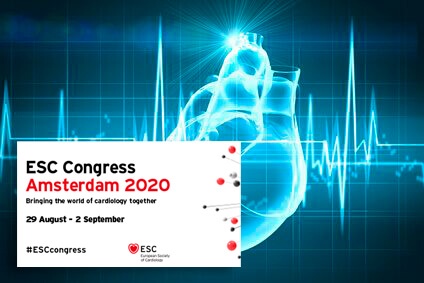In patients with hypertrophic cardiomyopathy, myosin inhibitor mavacamten plus optimal medical therapy improved hemodynamics, functional capacity, and symptoms. Mavacamten is the first myosin inhibitor drug of its class.

Presented virtually at the European Society of Cardiology 2020 Congress (ESC 2020) and published simultaneously in The Lancet, the EXPLORER-HCM study showed that 37% of patients who received mavacamten met the primary endpoint for this study, compared with 17% of patients who received placebo (p = 0.0005).
The primary endpoint was defined as either a ≥ 1.5 mL/kg per minute increase in oxygen consumption and ≥ 1 functional class improvement, or a ≥ 3.0 mL/kg per minute increase in oxygen consumption and no worsening functional class.
This is the first molecule specifically developed for patients with hypertrophic cardiomyopathy since the original description of the disease, 60 years ago.
Read also: ESC 2020 | Atrial Fibrillation and Rhythm Control: A Matter of Time?
Current treatment focuses on symptom improvement using beta blockers and calcium channel blockers, but it does not modify the natural history of the disease.
While other procedures such as surgical septal myectomy and alcohol septal ablation can help, they are more invasive, require experience, and are not free from complications.
EXPLORER-HCM included 251 patients with hypertrophic cardiomyopathy randized to mavacamten or placebo for 30 weeks. At randomization, most patients had New York Heart Association (NYHA) functional class II symptoms and all of them were receiving beta blockers or calcium channel blockers.
Read also: Can Aspirin Use Be Interrupted After Angioplasty?
There were no significant adverse events in the treatment arm, and the safety profile of the drug was very good.
explorer-hcm
Original Title: Mavacamten for treatment of symptomatic obstructive hypertrophic cardiomyopathy (EXPLORER-HCM): a randomized, double-blind, placebo-controlled, phase 3 trial.
Reference: Olivotto I et al. Lancet 2020; Epub ahead of print y presentado en el congreso ESC 2020 de manera virtual.
Subscribe to our weekly newsletter
Get the latest scientific articles on interventional cardiology
We are interested in your opinion. Please, leave your comments, thoughts, questions, etc., below. They will be most welcome.


